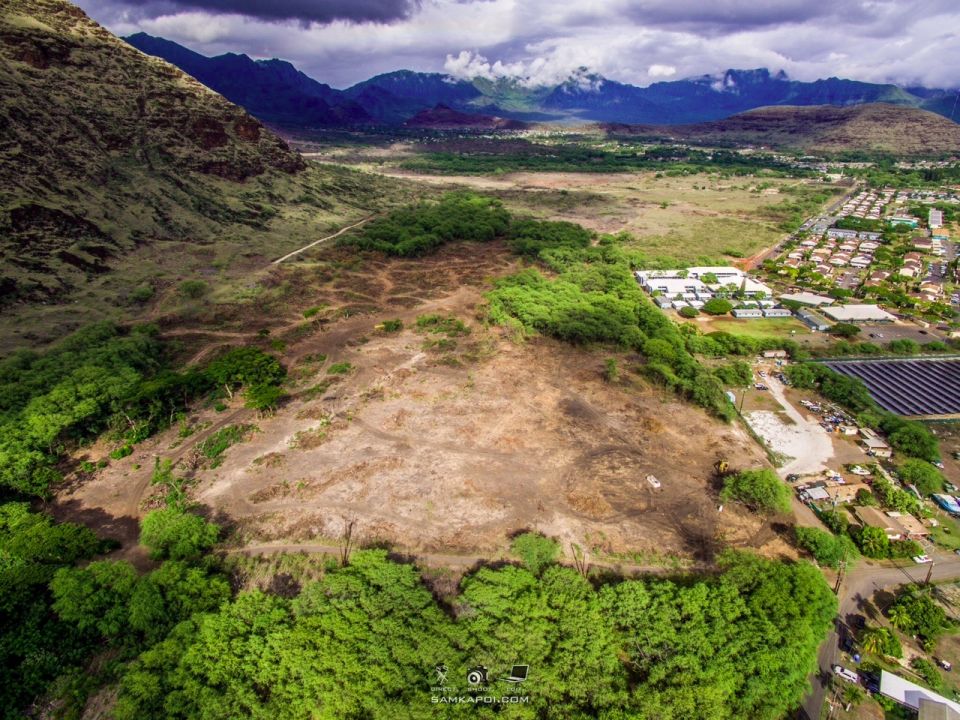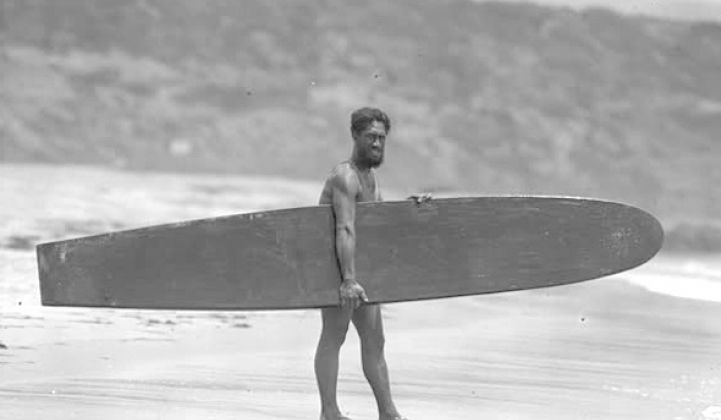REC Solar, acting as project contractor, just broke ground on what will be the biggest utility-scale solar power plant on the Hawaiian islands. (You'll recall that Duke Energy acquired a majority stake in solar installer REC Solar in February of last year.)
We spoke with Drew Bradley, director of business development at REC, about the 27.6-megawatt (AC) project. He provided a trove of vital stats on the Waianae Solar project, located on the leeward side of the island of Oahu.
He said, "It's the largest solar farm on Oahu by a long shot," adding, "There were seven waivered projects" working their way through the utility procurement process (a total of 240 megawatts) "and all of them perished except for this project." Bradley continued, "Out of the 240 megawatts that were going to be built, 200 megawatts got denied by the PUC or terminated by HECO." (Five of the the lost projects were SunEdison solar and wind projects.)
REC still has more capital to deploy.
Bradley told GTM that "REC Solar/Duke would love to buy out SunEdison’s 112 megawatts of HECO utility-scale projects."

Vital stats for the Eurus Energy Waianae Solar Farm project
-
Project developer: Eurus Energy is owned by Japan’s Toyota Tsusho and Tokyo Electric Power. Eurus will continue as owner and operator of the project.
-
Project contractor/EPC: REC Solar
Technology and land
-
Site is two adjacent parcels which combine for a total of 198 acres
-
System size (AC) = 27.6 megawatts
-
System size (DC) = 40.392 megawatts
-
Inverters: a total of 17 TMEIC 1,667-kilowatt units used in a 1,000-volt system (TMEIC is a JV between Toshiba and Mitsubishi)
-
Modules: Canadian Solar 315-watt and 320-watt modules
-
Racking: Horizontal single-axis trackers from Exosun
Pricing, financing and timing
-
PPA rate: HECO will buy the power from the Waianae solar plant for 14.5 cents per kilowatt-hour
-
Contract executed between Eurus Energy and REC Solar Commercial on Dec. 29 of last year
-
Debt financing: Sumitomo Mitsui Banking
-
Guaranteed commercial operation date: According to Bradley, "It's going to be cranking out power by the end of this year, we know that. We're hoping to hit it by November for actual production and feeding into the grid. We've guaranteed the project will be done by the last day of the year."
Ground mounts and Hawaiian soil
- Site is two adjacent parcels which combine for a total of 198 acres
- System size (AC) = 27.6 megawatts
- System size (DC) = 40.392 megawatts
- Inverters: a total of 17 TMEIC 1,667-kilowatt units used in a 1,000-volt system (TMEIC is a JV between Toshiba and Mitsubishi)
- Modules: Canadian Solar 315-watt and 320-watt modules
- Racking: Horizontal single-axis trackers from Exosun
Pricing, financing and timing
-
PPA rate: HECO will buy the power from the Waianae solar plant for 14.5 cents per kilowatt-hour
-
Contract executed between Eurus Energy and REC Solar Commercial on Dec. 29 of last year
-
Debt financing: Sumitomo Mitsui Banking
-
Guaranteed commercial operation date: According to Bradley, "It's going to be cranking out power by the end of this year, we know that. We're hoping to hit it by November for actual production and feeding into the grid. We've guaranteed the project will be done by the last day of the year."
Ground mounts and Hawaiian soil
It turns out that soil, especially in Hawaii, is a big deal. Bradley told GTM, "There are all kinds of soil on the 198-acre parcel. There are boulders, there's lava, there is coral, there is alluvial soil, there is sand -- there's every kind of subterranean material you could possibly think of. It's got it all. We've got to get creative with our foundation. Some of the site will be pile-driven, some of it will be pre-drill and mortar, and some of it will be grade beam. There will be a little bit of everything. That's probably one of the more challenging parts of the project. (Bradley explained that grade beam "looks like just a just a concrete pad. Specifically, half the pad is below grade and half is above grade. It's spreading out the load.")
As for O&M, "The good news is that this site is in much more of a desert. It's normally a desert. So the vegetation management is much easier than it was over on Kauai, where everything just grows, like, daily. There is definitely O&M that we'll be doing for vegetation maintenance, and for the O&M of the inverters and the modules, and the horizontal single-axis tracker. I consider it to be just standard-offer O&M."

Construction just started on a dedicated on-site substation. Bradley said, "That substation is taking the AC loop feeds that go throughout the project site and that are roughly 15,000 volts. The low side of the substation is 15,000 volts, and the high side of that substation is the transmission -- 46 kilovolts. Most people would call that 15 kilovolts on the in, and 46 kilovolts on the out. And then there's a gen-tie to connect it down to Farrington Highway, which is the main belt highway, if you will, around Oahu." He noted, "It's about 2,200 feet of gen-tie. Most of that is below-grade to connect that substation along Ala Akau Street. So the gen-tie is 2,200 feet, and the cap happens down on Farrington Highway, right on the main road."
He added, "The Waianae community is going to be very happy with the project, because the people in the construction trade that live in Waianae won't have to beat their way into town, into Honolulu, to go to a job site. They can take a right and go to a job site that's 5 minutes from their house. We're going to hire lots of locals and there will be hundreds of jobs."
Bradley points out that with the project at 14.5 cents per kilowatt-hour with no escalator, "That's lower than HECO's avoided cost." He added, "Because power rates are tied to the cost of production, you could infer that power is going to get cheaper because of this project."




